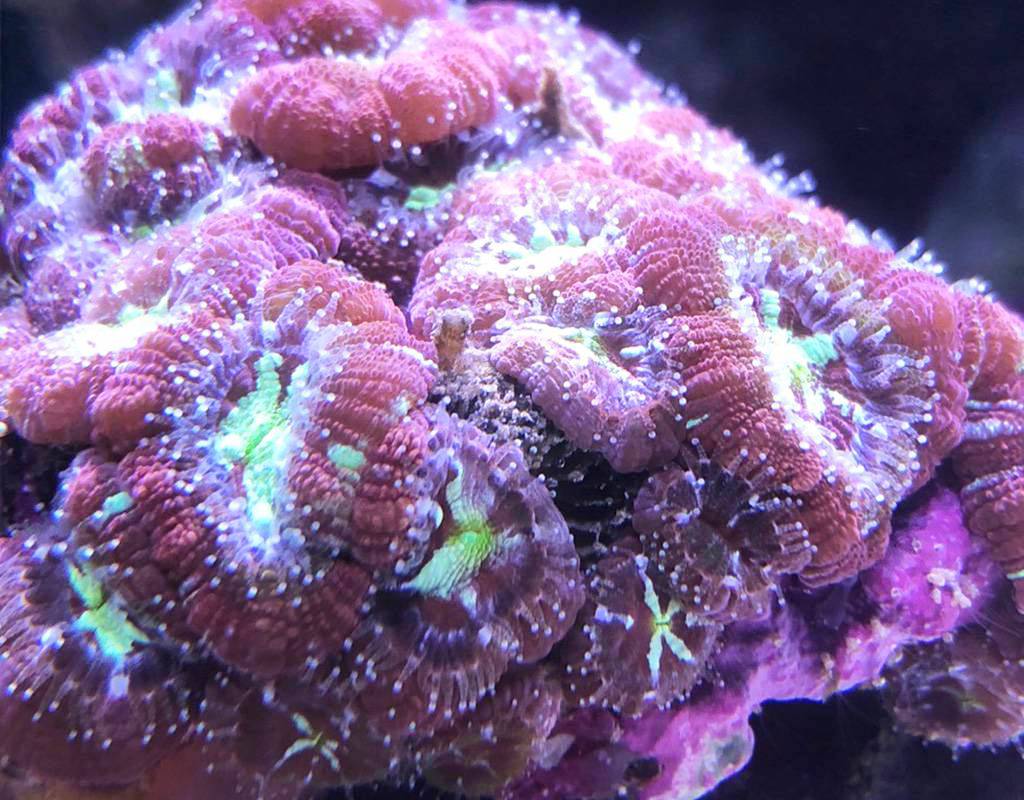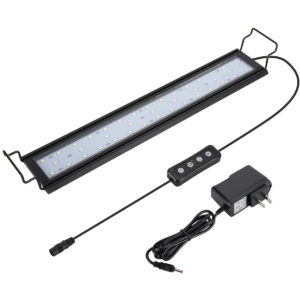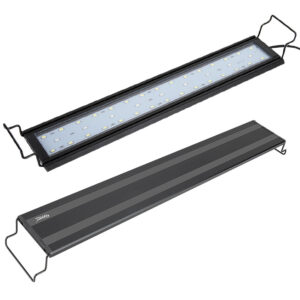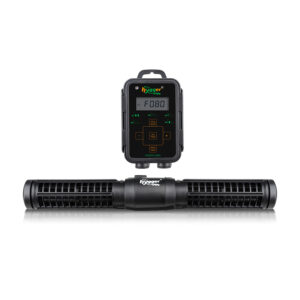Common Coral Disease Outbreak And Treatment
The coral disease would affect corals’ growth, or even lead to coral death. Below is an article about common coral disease and treatment, if you come across a coral disease outbreak in the reef tank, take it as a reference. Without wasting much time, let’s dive in.
Common Coral disease
To begin with, let’s take a look at some common coral diseases.
| Common coral disease | Description |
| Bleaching | 1. Causes: the frequent fluctuation of water temperature /intense light /low oxygen level /stress 2. Symptoms: Loss of colors, and turn white |
| Bad status of corals | 1. Causes: too many corals in the tank (high coral density), which is one reason for corals to compete for space and release toxins /poor water conditions 2. Symptoms: skin shedding /mucus on the coral surface /partial shrinkage |
| Decoloring | 1. Causes: uneven aquarium light /too low KH level /increased salinity level /microelement deficiency 2. Symptoms: loss of coral color |
| Black band disease | 1. Causes: bacteria infection, like cyanobacteria, photosynthetic and non-photosynthetic bacteria 2. Symptoms: Black bands on the coral surface |
| Dark spots disease | 1. It is also named Black necrosing syndrome 2. The causes are still not confirmed. Stress or other pathogen is possible reasons 3. Symptoms: dark, brown, or purple areas on the coral |
| White band disease | 1. Causes: the cause of the disease is still unknown 2. Symptoms: white band extending from the base to the top of the coral /exposed coral skeleton |
| White plague | 1. Causes: bacterial infection, sometimes caused by the bacterium – Aurantimonas coralicida 2. Symptoms: loss of tissue /exposed white skeleton |
| White pox disease | 1. Causes: caused by the pathogen Serratia marcescens 2. Symptoms: loss of coral tissue /irregular white patches on corals |
| Red band disease /Brown band disease | 1. Causes: caused by protozoa and cyanobacteria 2. Symptoms: exposed white skeleton /a brown zone on the coral |
| Yellow band disease | 1. Causes: caused by vibrio 2. Symptoms: yellow blotches on corals forming in an o-ring shape |
| Aspergillosis | 1. Aspergillosis affects Gorgonian soft corals, also famous as sea fans 2. Causes: the result of fungus infection – Aspergillus sydowii from sewage or dust 3. Symptoms: loss of tissues and skeleton /white or purple spots on the coral surface |
| Rhodotorulosis (Rapid wasting) | 1. Causes: bitten by parrot fish /growth of fungus Rhodotorula rubra 2. Symptoms: breakdown of coral tissue and skeleton |
What causes coral bleaching in reefs
Coral bleaching is corals’ response to stress. And coral bleaching usually appears when expelling symbiotic algae and zooxanthellae. Commonly, coral would become pale first, and then gradually turn bleaching. Because of the decrease or death of symbiotic algae, bleaching corals cannot release colors through photosynthesis.
Besides that, vulnerable branching corals, like Acropora coral, are more susceptible to get bleaching. On the contrary, large corals which can tolerate water temperature changes, are not easy to face bleaching.
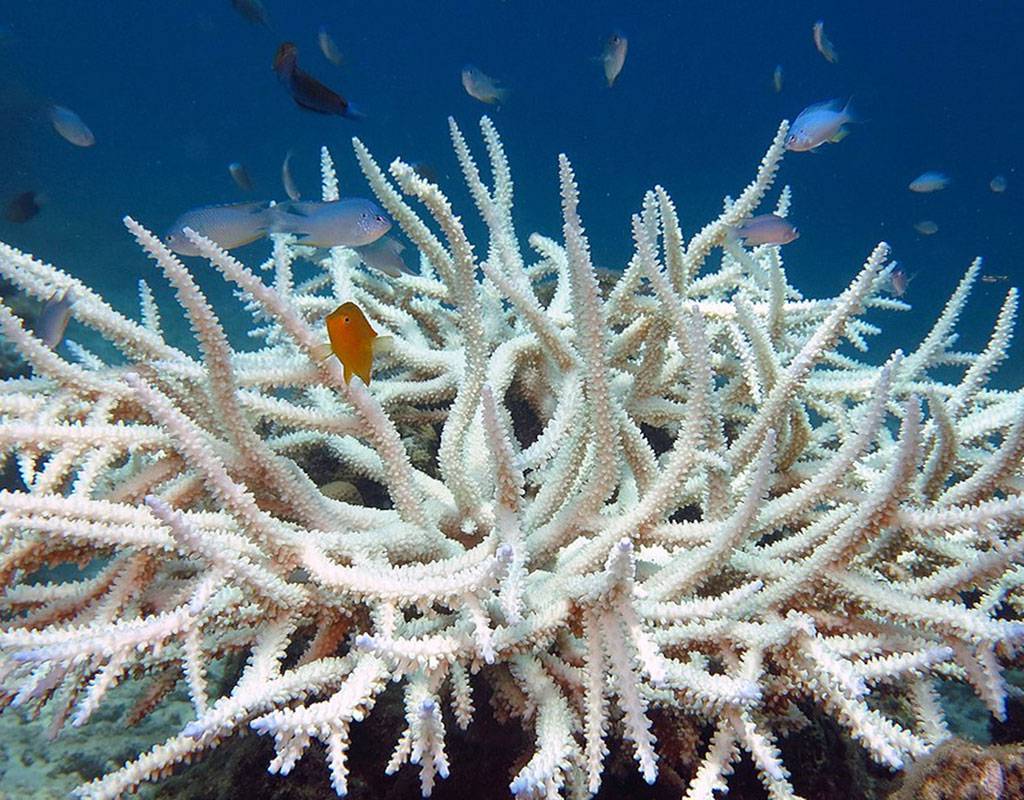
Coral reef decoloring
Coral reef decoloring may be the result of uneven aquarium light, too low KH level, increased salinity level, microelement deficiency, or others. Generally, impressionable corals may include elegance coral, staghorn coral, or other SPS corals.
When the Black Band disease is attacking
You can see a black band on the coral once it is affected by black band disease. The band separates the healthy tissue on the coral surface from the freshly exposed skeleton. Also, black band disease can be spread across coral colonies, which will degrade the coral tissue completely. Additionally, star corals, brain corals, massive corals, or other corals are susceptible to suffer black band disease.
Coral disease treatment
Treatments to deal with some common coral disease
| Disease | Treatment |
| Bleaching | 1. Adjust the water temp and keep it at optimal values 2. Adjust the light intensity 3. Do regular water changes 4. Feed natural plankton regularly |
| Bad status of corals | 1. Never overstock 2. Remove some corals from other aquariums 3. Monitor the aquarium water, and adjust the water conditions |
| Decoloring | 1. Test the water and then add the corresponding element 2. Adjust the aquarium light |
| Black band disease | 1. Add compound nitrifying bacteria 2. Add marine epoxy mixed with chlorine powder on the black band |
| Aspergillosis | 1. Add an aquarium lid 2. Change the aquarium water |
What to prevent the pathogen from reaching the coral
The pathogen may include bacteria, fungi, protozoa, and some parasites. Give below are some maintenance pointers.
- In the face of too much algae on corals, it is vital to remove the algae with your hands or aquarium cleaner.
- Clean your coral tank regularly. For instance, do water changes and test the water. You can do that once each week or once every two weeks.
- If you find mucus on the coral surface, you should remove the coral from the tank, and then rinse it with salt water. Or remove the aggressive corals or saltwater fish from another tank.
- Facing partially damaged corals, it is best to cut off the damaged part. And keep the rest and healthy coral in an aquarium with clean water, optimal water temp, and ideal light are necessary.
- If the coral’s surface sheds, you can slow down the water flow rate. But if the shedding lasts over two weeks, it is recommended to take treatments immediately.
- To strengthen coral’s body, you can feed natural coral food, plankton, or others. Just make sure sufficient diet.
The effect of NO3 and PO4
NO3 means the nitrate level, while PO4 refers to the phosphate level. No3 and PO4 will affect the growth of coral. Because they can accelerate the growth of zooxanthellae, and limit the coral growth in the face of too high levels of nitrate and phosphate. Generally, increased nitrate and phosphate in aquariums may be caused by overfeeding, untreated new water, bad aquarium filter, fish feces, or other factors.
Plus, there are some symptoms of too high levels of nitrate and phosphate:
- Cloudy aquarium water and poor water quality
- Algae thriving, like brown algae
- Bad status of corals, like shedding coral skeleton
By the way, too high levels of nitrate and phosphate may lead to brown symbiotic algae on coral. You can deal with it by changing aquarium water if it is not severe. Aside from that, the ideal phosphate value of saltwater tanks should be 0.08-0.12 ppm. Next, the table below will show you some reference values:
| Ideal nitrate level | Ideal phosphate level | |
| Hard corals | Less than 10 ppm | 0.02-0.05 ppm |
| Soft corals | 1-5 ppm | About 0.1 ppm |

